Francisco Câmara Pereira
Bayesian Active Learning for Censored Regression
Feb 19, 2024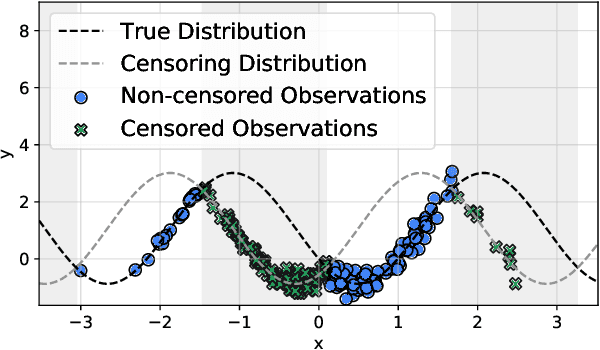

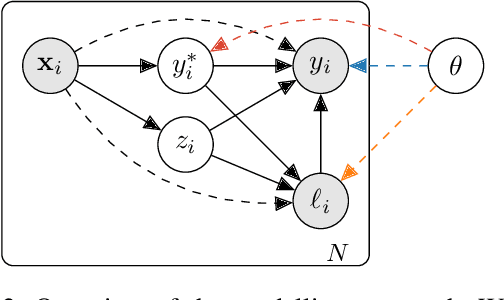

Abstract:Bayesian active learning is based on information theoretical approaches that focus on maximising the information that new observations provide to the model parameters. This is commonly done by maximising the Bayesian Active Learning by Disagreement (BALD) acquisitions function. However, we highlight that it is challenging to estimate BALD when the new data points are subject to censorship, where only clipped values of the targets are observed. To address this, we derive the entropy and the mutual information for censored distributions and derive the BALD objective for active learning in censored regression ($\mathcal{C}$-BALD). We propose a novel modelling approach to estimate the $\mathcal{C}$-BALD objective and use it for active learning in the censored setting. Across a wide range of datasets and models, we demonstrate that $\mathcal{C}$-BALD outperforms other Bayesian active learning methods in censored regression.
Deep Evidential Learning for Bayesian Quantile Regression
Aug 21, 2023Abstract:It is desirable to have accurate uncertainty estimation from a single deterministic forward-pass model, as traditional methods for uncertainty quantification are computationally expensive. However, this is difficult because single forward-pass models do not sample weights during inference and often make assumptions about the target distribution, such as assuming it is Gaussian. This can be restrictive in regression tasks, where the mean and standard deviation are inadequate to model the target distribution accurately. This paper proposes a deep Bayesian quantile regression model that can estimate the quantiles of a continuous target distribution without the Gaussian assumption. The proposed method is based on evidential learning, which allows the model to capture aleatoric and epistemic uncertainty with a single deterministic forward-pass model. This makes the method efficient and scalable to large models and datasets. We demonstrate that the proposed method achieves calibrated uncertainties on non-Gaussian distributions, disentanglement of aleatoric and epistemic uncertainty, and robustness to out-of-distribution samples.
Applied metamodelling for ATM performance simulations
Aug 07, 2023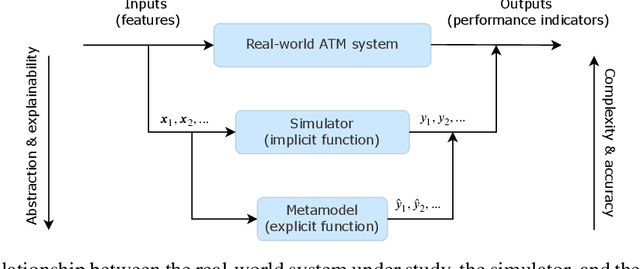
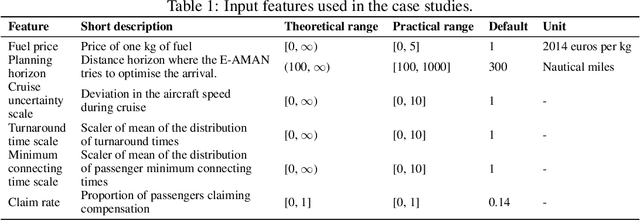
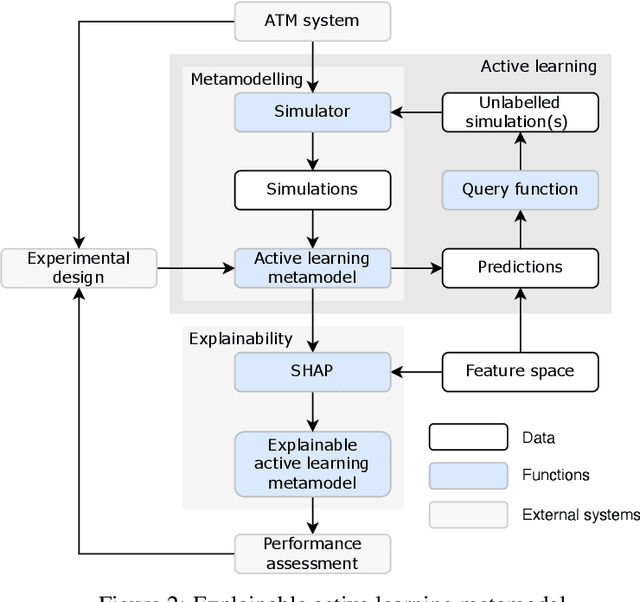
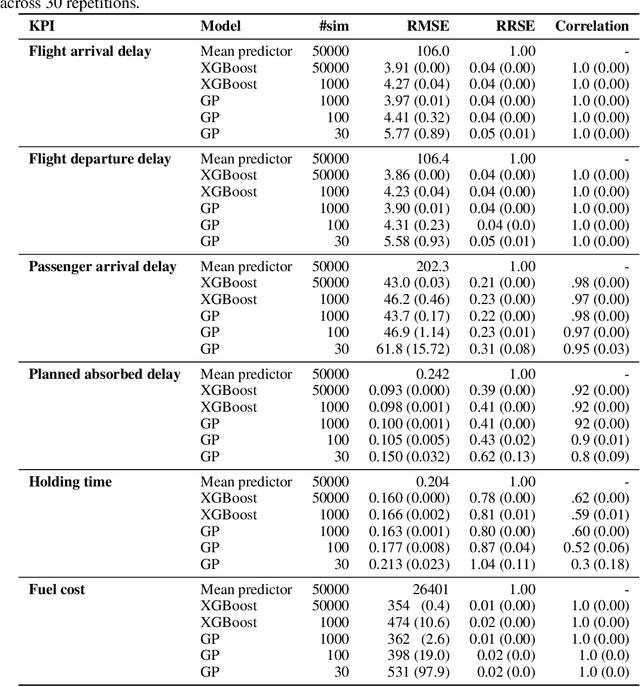
Abstract:The use of Air traffic management (ATM) simulators for planing and operations can be challenging due to their modelling complexity. This paper presents XALM (eXplainable Active Learning Metamodel), a three-step framework integrating active learning and SHAP (SHapley Additive exPlanations) values into simulation metamodels for supporting ATM decision-making. XALM efficiently uncovers hidden relationships among input and output variables in ATM simulators, those usually of interest in policy analysis. Our experiments show XALM's predictive performance comparable to the XGBoost metamodel with fewer simulations. Additionally, XALM exhibits superior explanatory capabilities compared to non-active learning metamodels. Using the `Mercury' (flight and passenger) ATM simulator, XALM is applied to a real-world scenario in Paris Charles de Gaulle airport, extending an arrival manager's range and scope by analysing six variables. This case study illustrates XALM's effectiveness in enhancing simulation interpretability and understanding variable interactions. By addressing computational challenges and improving explainability, XALM complements traditional simulation-based analyses. Lastly, we discuss two practical approaches for reducing the computational burden of the metamodelling further: we introduce a stopping criterion for active learning based on the inherent uncertainty of the metamodel, and we show how the simulations used for the metamodel can be reused across key performance indicators, thus decreasing the overall number of simulations needed.
Mind the Gap -- Modelling Difference Between Censored and Uncensored Electric Vehicle Charging Demand
Jan 24, 2023Abstract:Electric vehicle charging demand models, with charging records as input, will inherently be biased toward the supply of available chargers, as the data do not include demand lost from occupied stations and competitors. This lost demand implies that the records only observe a fraction of the total demand, i.e. the observations are censored, and actual demand is likely higher than what the data reflect. Machine learning models often neglect to account for this censored demand when forecasting the charging demand, which limits models' applications for future expansions and supply management. We address this gap by modelling the charging demand with probabilistic censorship-aware graph neural networks, which learn the latent demand distribution in both the spatial and temporal dimensions. We use GPS trajectories from cars in Copenhagen, Denmark, to study how censoring occurs and much demand is lost due to occupied charging and competing services. We find that censorship varies throughout the city and over time, encouraging spatial and temporal modelling. We find that in some regions of Copenhagen, censorship occurs 61% of the time. Our results show censorship-aware models provide better prediction and uncertainty estimation in actual future demand than censorship-unaware models. Our results suggest that future models based on charging records should account for the censoring to expand the application areas of machine learning models in this supply management and infrastructure expansion.
 Add to Chrome
Add to Chrome Add to Firefox
Add to Firefox Add to Edge
Add to Edge